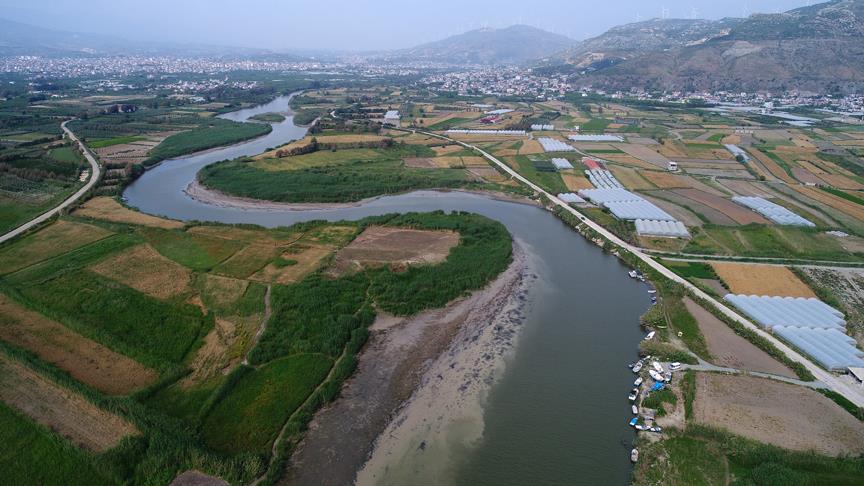The Asi River, which originates in Lebanon, and flows through Syria and Türkiye before emptying into the Mediterranean, is an important river both historically and environmentally. The river has a total length of approximately 386 km, with 7% of it passing through Lebanon, 67% through Syria, and 26% through Türkiye.
Geographical and Hydrological Features
The Asi River originates in the Bekaa Valley near Baalbek in Lebanon. It flows through Homs, Hama, and the Ghab Plain in Syria before reaching Türkiye and emptying into the Mediterranean Sea in the Hatay Province. The river flows from south to north, following an unusual direction, which is why it is called "Asi" (meaning "rebellious" in Arabic).
The river is influenced by the Mediterranean climate, characterized by dry, hot summers and rainy winters. The amount ofrainfall varies between 950–1270 mm in Lebanon, 760–1015 mm in Syria, and 505–1095 mm in Türkiye.

Asi River (Anadolu Agency)
Water Management and Quality Issues
Water management in the Asi River has caused problems, especially between Syria and Türkiye. In the 1950s, the river's average annual flow was 3,399.3 million cubic meters, but this value decreased by 30%, dropping to 2,400 million cubic meters. This reduction resulted in a 67% decrease in the amount of water reaching Türkiye.
Over time, the river water has become polluted and no longer meets the standards for irrigation. As a result, levels ofammonia and heavy metals have reached levels that threaten human health.
A study conducted in 2020 analyzed water samples from the Turkish section of the Asi River, including measurements of pH, electrical conductivity (EC), soluble cations, and anions. The results showed that the river falls into the high salinity category (C3S1), indicating that its use in soils with limited drainage is risky.
Environmental Issues and the Delta Region
The delta region of the Asi River in Hatay faces significant environmental challenges. In addition to geological and climatic factors, human activities have exacerbated these problems. Issues such as soil erosion, flooding, coastal sand dunes, and pollution threaten the ecosystem of the delta region.
Furthermore, the rise of tourist facilities in the delta area has led to a decrease in agricultural lands and the degradation of the natural landscape. Coastal erosion and improper land use have further deepened the environmental issues in the region.
The Asi River is an important watercourse historically, geographically, and environmentally. However, issues with water management, pollution, and environmental threats jeopardize the sustainability of the river. Therefore, international cooperation and integrated water management strategies should be developed to ensure the protection and sustainable use of the Asi River.


